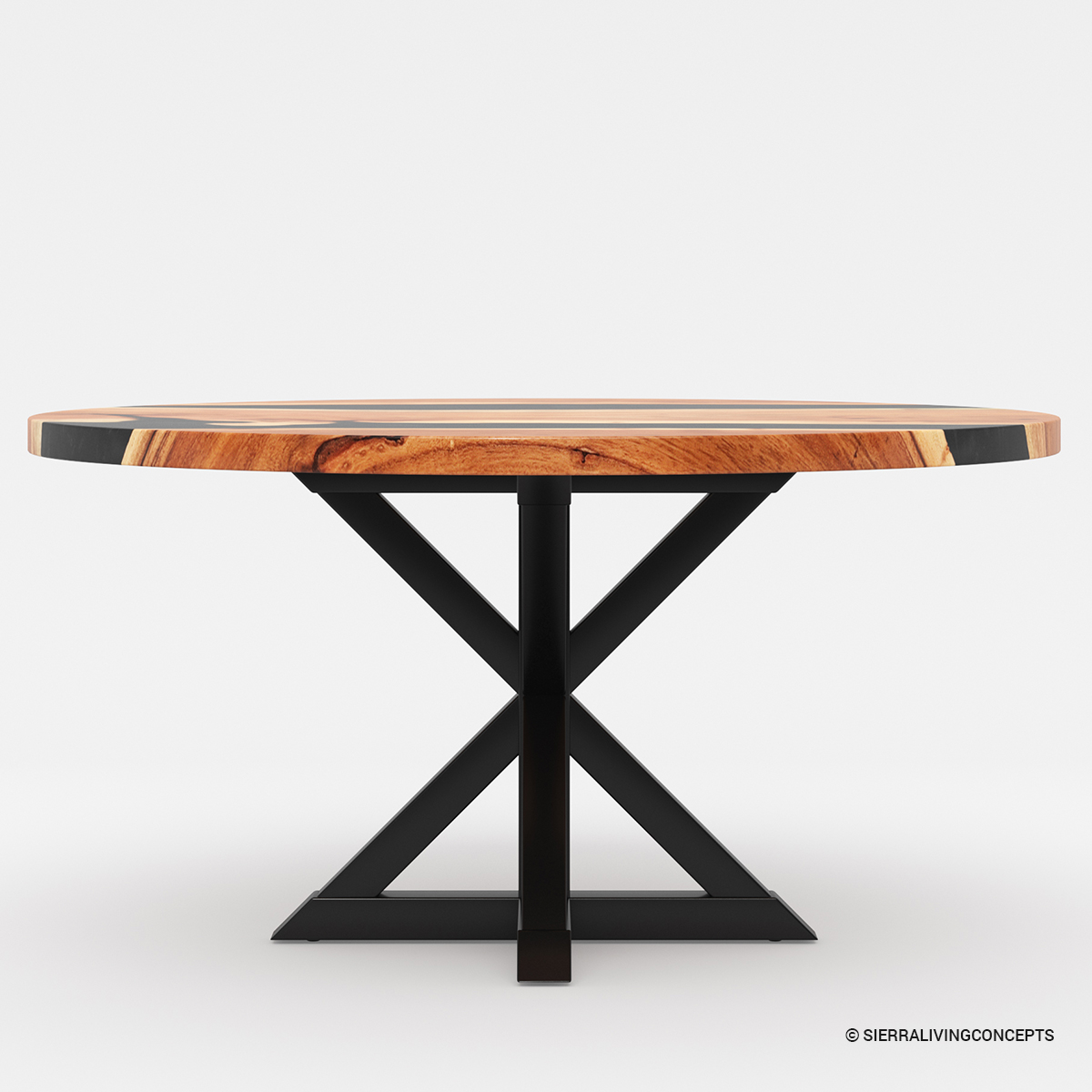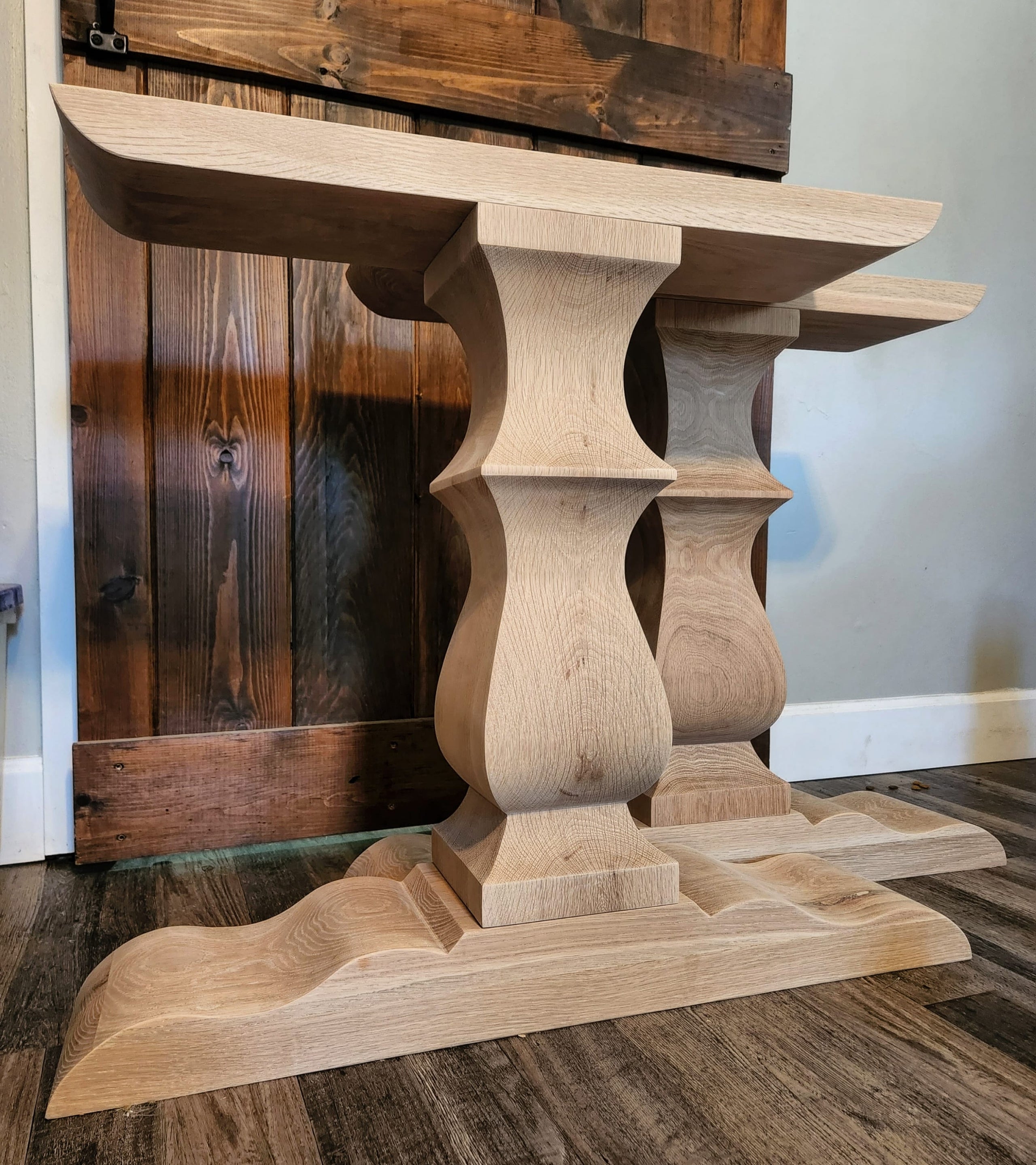Professional Tips for Setting Up Dining Room Table Legs for Maximum Stability
When it concerns setting up dining room table legs, achieving optimum stability is vital for both capability and appearances. The process begins with picking the ideal products and hardware, followed by careful alignment and factor to consider of weight circulation. Each action plays an important role in ensuring that the finished item withstands everyday use without endangering security or design honesty. Nevertheless, comprehending the nuances of these elements can significantly influence the general end result. What particular strategies can boost stability even further?
Pick the Right Legs
When picking the ideal legs for your eating space table, it is necessary to think about both capability and aesthetics. The legs you choose will significantly impact the total layout and security of the table. Review the table's planned use; if you anticipate frequent celebrations, tougher legs, such as those made from strong wood or steel, may be a lot more ideal, as they supply enhanced sturdiness and assistance.
Standard dining tables generally vary from 28 to 30 inches in height, so ensure the legs line up with this standard for comfort. Tapered legs can add a contemporary touch, while transformed legs might communicate an extra classic visual.

Select Appropriate Hardware
How can the ideal equipment improve the security and durability of your dining-room table? The selection of suitable equipment is vital to ensuring that the legs of your table are firmly connected and able to withstand regular use. Premium screws, screws, and brackets offer the required toughness to sustain the weight of the table, in addition to any kind of additional loads placed upon it during meals or gatherings.
When selecting screws, choose those made from resilient products such as stainless-steel or brass, which withstand rust and keep honesty in time. The size of the screws is just as crucial; they ought to permeate deeply into the table's structure without compromising integrity. For bolted connections, think about using lock washing machines to stop loosening up because of vibration or activity.
In addition, utilizing edge brackets can add extra assistance, specifically for bigger tables or those with larger tops. These braces distribute weight uniformly and help keep the table's form. Guaranteeing that the equipment you choose is ideal for the particular products of your table will better enhance its overall stability and durability, enabling you to enjoy your dining experience for many years ahead.
Ensure Appropriate Alignment
Appropriate placement of dining-room table legs is necessary for both aesthetic appeal and useful stability. Misaligned legs can lead to an unequal tabletop, which might not only be visually unappealing but likewise endanger the table's use. To attain optimum positioning, begin by gauging the distance from the table's edges to the leg attachment factors. This makes sure that each leg is located equidistant from the edges, creating a well balanced look.
Utilize a level during setup to validate that each leg is vertical to the table top. It is suggested to note the desired leg positions on the bottom of the table with a pencil or covering up tape before safeguarding them.
Furthermore, ascertain the placement after the preliminary screws are tightened up, as modifications may be required prior to totally protecting the equipment. By focusing on correct placement, you not only enhance the table's general layout but likewise make certain that it continues to be steady and practical for several years to come.

Take Into Consideration Weight Circulation
After ensuring proper placement of the eating space table legs, it is very important to think about weight circulation to enhance stability and performance. dining room table legs. Proper weight circulation is crucial in preventing making certain and wobbling that the table can support its desired tons without risk of tipping or falling down
When positioning the legs, guarantee they are placed at equivalent distances from the center of the table to evenly disperse the weight across the framework. Think about the weight of the tabletop and any kind of products that will regularly rest on it, such as ornamental items or tabletop devices. Tables with much heavier surfaces need to ideally have legs located closer to the edges, as this optimizes the base of assistance and reduces the threat of instability.
In addition, if the table is meant for usage in a high-traffic area, consider using larger materials for the legs or adding maintaining components, such as cross-bracing or a lower shelf - dining room table legs. These changes can help keep equilibrium and avoid changing click here to find out more during use. Eventually, a well-considered weight distribution approach will dramatically boost the table's total efficiency, ensuring it remains a eye-catching and functional centerpiece for your eating space
Examination Stability Prior To Usage
Checking the stability of the eating area table prior to use is a critical action that ought to not be forgotten. If the table reveals instability, identify the legs or joints that may need change.
Following, check that all screws and bolts are tightened appropriately. Loosened links can lead to instability and prospective damage with time. If essential, use wood adhesive on joints to boost stability, making sure to enable adequate drying time.

Verdict
To conclude, the setup continue reading this of dining space table legs requires mindful consideration of products, weight, hardware, and alignment circulation to accomplish maximum security. By selecting high-quality bolts and durable legs, making certain specific placement, and dispersing weight evenly, the architectural stability of the table can be considerably enhanced. Carrying out a security test prior to normal usage better makes sure that the table will certainly withstand day-to-day pressures, therefore providing a trusted and safe dining experience.
When it comes to setting up eating space table legs, achieving maximum security is paramount for both performance and aesthetics. The legs you choose will substantially influence the Read Full Report total layout and stability of the table (dining room table legs). Common dining tables normally range from 28 to 30 inches in elevation, so make sure the legs align with this criterion for comfort.Correct placement of eating space table legs is essential for both aesthetic appeal and practical security.In verdict, the setup of dining area table legs requires careful factor to consider of materials, positioning, weight, and equipment circulation to achieve maximum stability